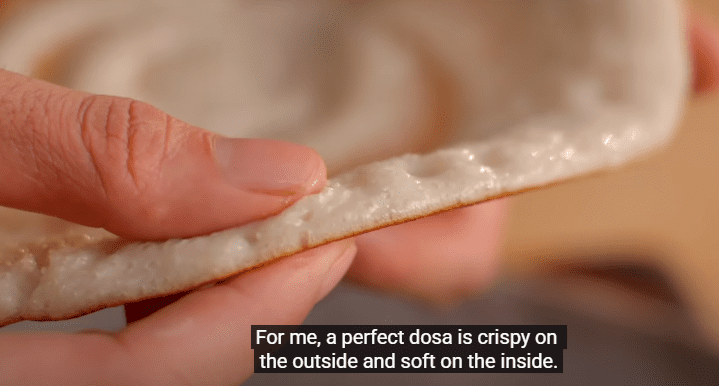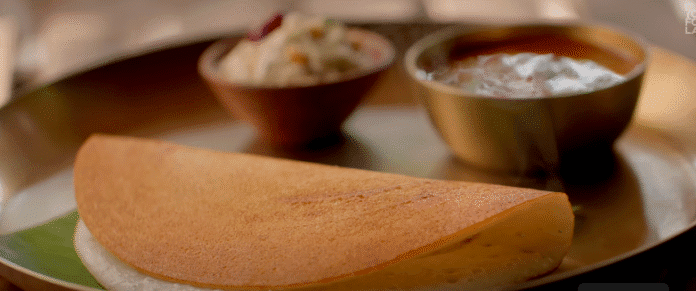Dosa is a famous South Indian breakfast dish made from a fermented batter of rice and lentils. It’s crispy, golden, and super tasty when served with sambar, coconut chutney, or potato masala. In this guide, we show you how to make crispy restaurant-style dosa easily at home.
This step-by-step video shows you how to create perfect dosa, from preparing the batter to cooking it crisp on a seasoned tawa. Here’s what you’ll learn:

Ingredients for Dosa Batter
- 1 cup urad dal (split black gram)
- 2 cups rice (regular or parboiled)
- ¼ tsp fenugreek seeds
- 2 tbsp poha (flattened rice) – optional, for crispiness
- Water – as needed
- Salt – to taste
Step-by-Step Dosa Recipe
Step 1: Soak and Grind
- Wash and soak urad dal, rice, and fenugreek seeds for 4–6 hours.
- Optionally soak poha for 30 minutes before grinding.
- Grind to a smooth batter using minimal water.
Prepare and Ferment Dosa Batter
- Make a mixture of urad dal, rice, and fenugreek seeds—soaked, ground to a smooth consistency, and fermented overnight until airy and bubbly.
- Optionally, add poha (flattened rice) for extra crispness.

Step 2: Ferment the Batter
- Leave the batter in a warm place overnight or for 8–12 hours.
- Batter should double in volume and become light and fluffy.

Step 3: Season the Tawa
- Heat your dosa pan or tawa until it’s hot.
- Rub a cut onion or cloth dipped in oil across the surface to prevent sticking.

Step 4: Make the Dosa
- Pour a ladle of batter on the center of the pan.
- Spread it in a circular motion to form a thin layer.
- Drizzle oil or ghee around the edges.
- Cook until the edges are golden and crispy.
- Fold and serve hot.

Serve with Sambar & Chutney !

Quick Tips for Perfect Dosa
- Stir the batter well before each dosa to mix air and prevent lumps
- Pour the batter while the pan is medium-hot, not too hot or cold
- Use a little oil around the edges to achieve a flaky, crispy texture

Why This Method Works
This method ensures your dosa has just the right balance of crispness and softness. The fermented batter gives it that signature tang, while proper pan seasoning and spreading technique result in a restaurant-quality finish every time.
